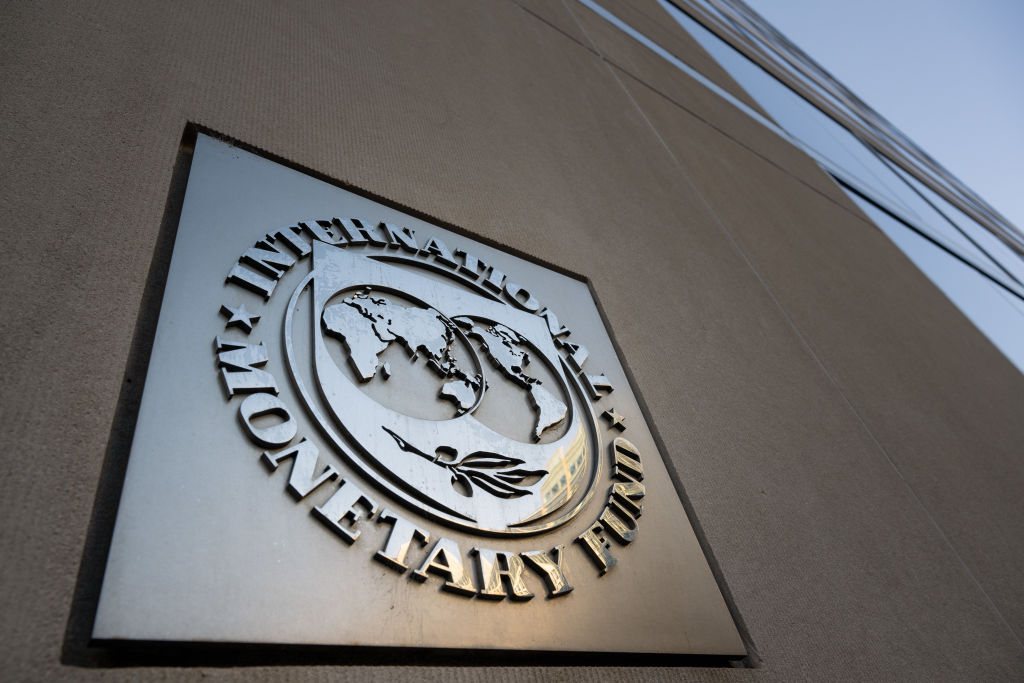Europe’s debt trap: Why the IMF’s warning cannot be ignored
The IMF is right to warn that some countries will need to rethink aspects of their welfare systems to stabilise their debt. The challenge is to convince voters before bond markets force their hand

There were good reasons why some EU members insisted that the International Monetary Fund should be part of the “troika” that oversaw national bailouts during the eurozone crisis. They didn’t just value the IMF’s expertise in helping countries that had lost access to the bond markets put their public finances back on a sustainable footing. It was above all the IMF’s independence, which meant that unlike EU institutions, it was less likely to succumb to political pressure to avoid telling inconvenient truths.
It’s in no small part thanks to the IMF’s prescriptions that those crisis countries are among Europe’s best-performing today. Under pressure, Greece, Portugal and Ireland undertook painful reforms of their public sectors to put their finances on a long-term sustainable footing. As a condition of its third bailout, Greece, for example, was obliged to reform an out-of-control pension system that pre-crisis was paying out nearly a quarter of GDP each year – a third of which was going to those aged under 65. Fear of the indignity of an IMF bailout was enough to drive some countries, such as Spain, to undertake far-reaching reforms themselves.
The eurozone may not be facing an immediate crisis, but the IMF’s insights are arguably needed more urgently today than ever. Not only are European debt levels now far higher than they were back in 2010, but the EU’s own attempts to ensure fiscal discipline have proved weak. More importantly, the creation of new European Central Bank emergency bond-buying facilities – designed to prevent a repeat of the last crisis – may be suppressing the market price signals in the form of higher bond yields that serve as a warning sign to governments that a country’s debt risks becoming unsustainable.
That’s why the latest warning by the IMF over the tough decisions needed to put European debts on a firm footing should be taken very seriously. The warning was contained in a report published last week titled How can Europe Pay for Things It Cannot Afford? In it, the IMF noted that, faced with pressures to spend more on defence, health, pensions and climate, the debt-to-GDP ratio for the average European country is on course to more than double to 155% on a GDP-weighted basis. This could climb to an eye-watering 190% if rising debt leads to slower growth and higher interest rates. That is clearly unsustainable.

An anti-austerity rally in Dublin. (Photo by Niall Carson/PA Images via Getty Images)
The good news is that there are actions governments can take at a national and European level to bring down this debt trajectory by boosting growth. For example, the IMF calculates that reforming national labour markets, cutting red tape and improving the functioning of capital markets could boost GDP by up to five percentage points in advanced economies. At the same time, EU-wide reforms to remove internal barriers to trade in areas such as energy and financial services, and using common borrowing to invest in pan-European defence, energy networks and research – as recommended by former Italian prime ministers Mario Draghi and Enrico Letta – could lift GDP by a further three percentage points.
The bad news is that this would still leave many countries with debt levels far above what the IMF considers to be a safe “reference level” of 90% of GDP by 2040. Even after an ambitious set of reforms, the average debt-to-GDP ratio would be 105%; a moderate effort would bring it down only to 115%. That would still leave a quarter of European countries needing to find tax hikes and spending cuts of more than 1% of GDP for five years to lower debt to the reference level. To put that in perspective, over the last 30 years, few countries have been able to sustain such an adjustment for more than four years.
The IMF’s grim prognosis tallies with what other forecasters are saying. Goldman Sachs, for example, reckons that France will need to reduce its primary deficit before interest payments from 4% of GDP to zero simply to stabilise its debt (which currently stands at 113% of GDP). Nor can European countries count on German government spending to lift their economies out of their debt trap. Indeed, Berlin’s borrowing binge will barely lift its own economy out of the doldrums. Morgan Stanley reckons that even when the full impact is felt next year, German growth will struggle to rise above 1%.
No wonder the IMF is warning that to put their debts on a sustainable footing, some countries will have to confront the ultimate taboo: limiting the scale and scope of the “European model”. In most countries, taxes are already at the limits of public acceptance and further hikes could be self-defeating in terms of the impact on growth. The answer must be reforms to over-generous welfare systems. If all EU countries were to bring their spending on items such as health, pensions and education in line with the advanced economy average, that alone could generate fiscal savings of close to 3% of GDP, the IMF reckons.
Of course, most European leaders understand this only too well. The challenge is to convince voters in the absence of market pressure. In Britain, which does not enjoy the protection of the ECB, there is some evidence that fiscal realism is returning to the national debate ahead of a crucial budget at the end of the month. The danger for the eurozone is that if governments wait until the bond markets force their hand, it may already be too late.
Simon Nixon is a columnist at Euractiv and publisher of the Wealth of Nations newsletter on Substack. He is a leading commentator on European political economy and geoeconomics and was Chief European Commentator at The Wall Street Journal from 2013 to 2018.







